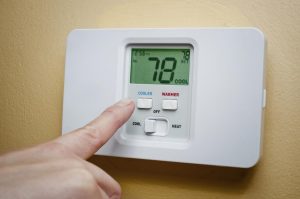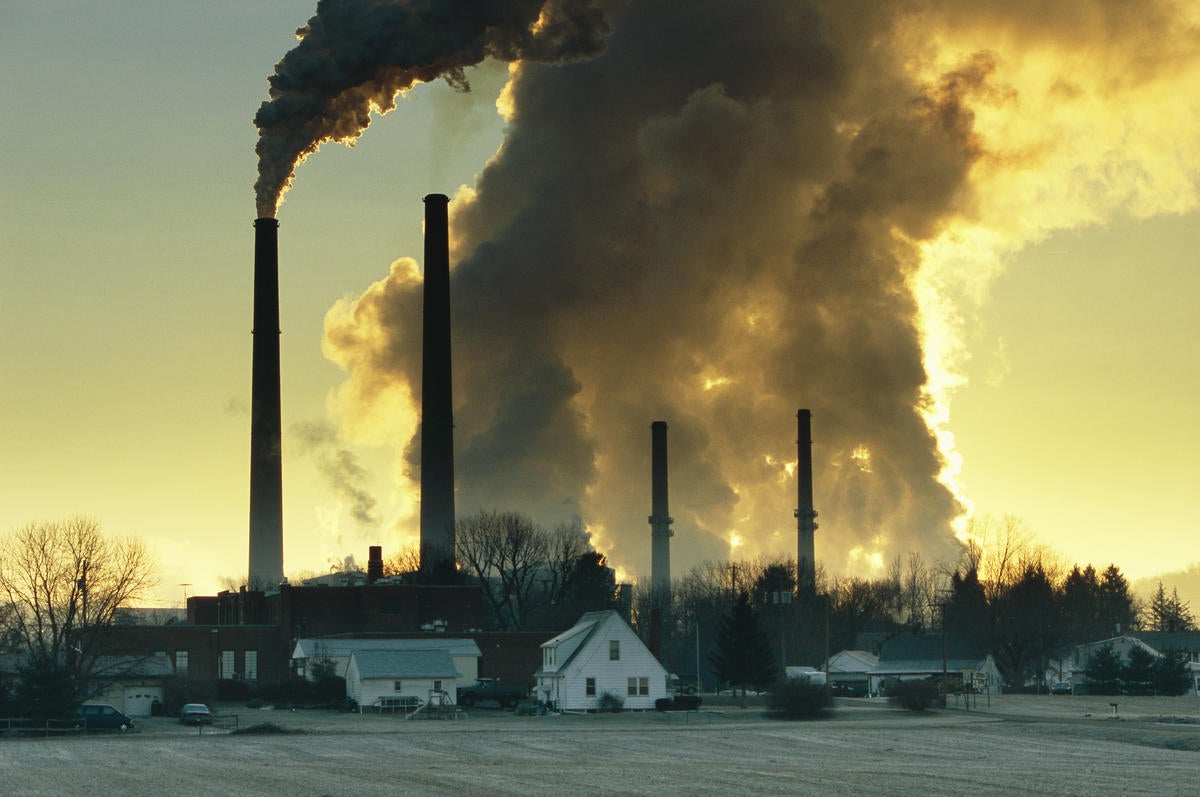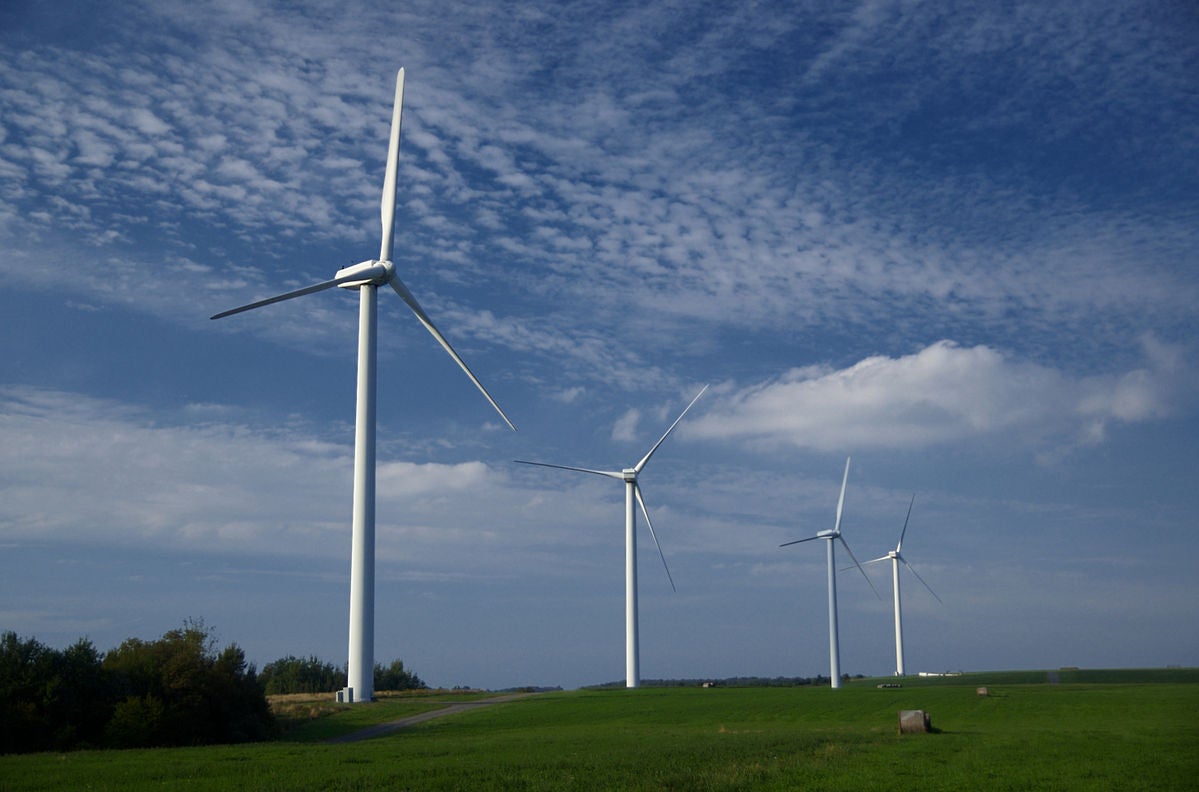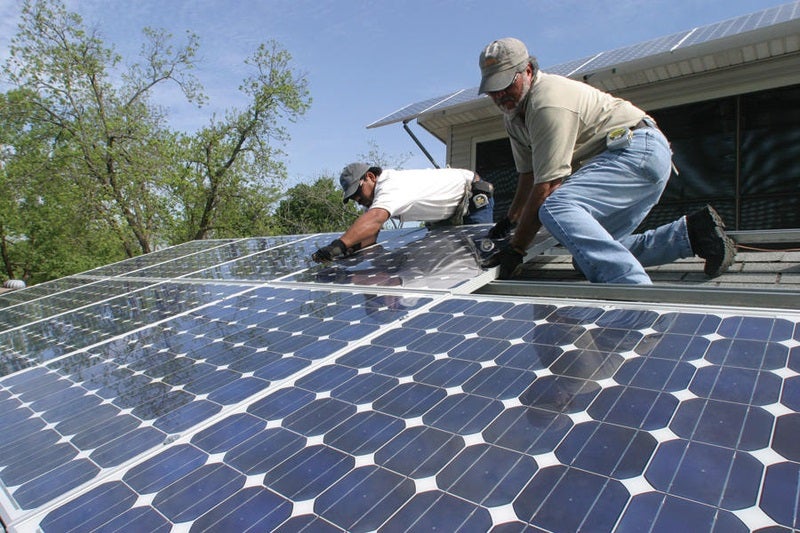
Shifting toward clean energy can lower costs for Pennsylvanians
As fall leaves are rapidly disappearing and temperatures drop, families across Pennsylvania are starting to turn up home thermostats to keep warm. Ensuring affordable, reliable energy is available should be an absolutely critical priority for policymakers. This winter, however, is expected to bring higher than usual energy prices that could hit U.S. households in colder regions like the Northeast and upper Midwest especially hard. And it reveals how American families and businesses bear the brunt of wild price fluctuations in fossil fuels and deserve more stable, cleaner sources of energy.
According to the U.S. Energy Information Administration (EIA), households that primarily use natural gas for space heating will spend an average of 30% more on heating this winter than last year. This is especially concerning for a state like Pennsylvania where over half of households use natural gas to heat their homes, and much of Pennsylvania’s electricity is powered by natural gas-fired power plants, meaning even those who don’t use natural gas fuel directly for heating may still be affected by rising prices.
With families, communities and businesses worried about costs for heat and electricity, many are capitalizing on this fear to spread disinformation about the causes. So, what exactly is driving these spikes? And how can we avoid this situation in the future?
Why energy prices are higher this year
First and foremost, the world is still reeling with an unprecedented pandemic that has massively affected energy use and demand. When many countries went into lockdown last year, the demand for energy plummeted along with prices. And when prices dropped, so did oil and gas drilling and production in the U.S. Remember those unbelievable headlines about oil and gas prices hitting rock bottom (hitting negative $37 per barrel at one point!) in Spring 2020?
Flash forward to post-vaccine rollout as Americans start to travel again, eat out, and resume other pre-pandemic activities, energy demand is now shooting back up. But gas production is not expected to keep pace. Why?
As Samantha Gross, director of the Energy Security and Climate initiative at the Brookings Institution, explained in a recent TIME magazine interview: “In the U.S., for example, our natural gas system is very price responsive, so nobody drilled when prices were so low. So now the gas that would have been produced from those wells isn’t there, meanwhile demand is just skyrocketing as the economy is recovering. And the system is just not quite balanced yet.”
U.S. drillers are using billions of dollars in profits from higher gas prices to pay back debt and award shareholders instead of meeting current demand. This means there will be less gas going into storage wells that could be used for winter. As a result, gas prices have doubled over the past year and higher prices are expected into 2022. On top of that, the U.S. gas industry is moving to export more liquefied natural gas (LNG) to take advantage of even higher prices abroad in Europe and Asia. This export scheme means less natural gas available for American consumers as producers choose more profitable overseas markets over domestic markets, resulting in further increasing costs that are being passed on to American families and businesses.
The bottom line? Natural gas prices are extremely volatile and an over-reliance on this fuel means that Pennsylvania families, communities and businesses will ride the roller coaster of price spikes. To be clear, we can’t drill our way out of this problem as it will only deepen our dependency, increase our exposure to price volatility, and add to the worsening climate crisis. And making matters even worse, Pennsylvania’s oil and gas companies waste over 1.1 million metric tons of methane – AKA natural gas – every year, enough to meet the annual needs of over 780,000 Pennsylvania households. Stopping this waste with commonsense pollution rules as we transition to cleaner energy is important for keeping product in the pipe, rather than in the air we all breathe. Simply put, wasted methane is wasted dollars we can’t afford.
How moving toward clean energy can save consumers money
Unlike gas, clean energy does not suffer from wild price fluctuations. Fuel costs don’t change for wind- and solar-powered electricity over time because the wind and sun are free, and clean energy produced in the U.S. stays in the U.S. Fuels needed to power fossil fuel plants, however, are traded globally and subject to supply chain and other constraints that impact their availability and price. And the costs of clean energy continue to rapidly fall. In the last decade alone, the cost of producing electricity from solar energy has fallen 89%, and the cost of utility-scale battery storage dropped 70% in just a three-year period (2015-2018).
While home heating with fossil fuels also needs to be addressed with beneficial electrification programs and investment, ensuring cheaper, clean electricity can benefit both electric and heating customers and make the eventual switch off dirty home heating fuels to electricity even more cost-effective. This switch can help low-income households in particular, which bear a heavier cost burden from volatile natural gas.
Therefore, shifting away from fossil fuels is not only the healthier option, but the cheaper option in the long run. Pennsylvania’s move to link to the Regional Greenhouse Gas Initiative (RGGI), a multi-state program slashing climate pollution from power plants and investing in clean energy, offers opportunities to save consumers money:
- With RGGI, Pennsylvania will have a more diverse, cleaner energy portfolio and will maintain more existing, large zero-emission nuclear plants. RGGI can help avoid capital expenditures to build costly new power plants to replace the lost nuclear capacity that is designed to run 24-7 – capacity that will invariably be replaced by higher polluting plants, causing power sector emissions to start to rise for the first time in many years.
- By putting a price on pollution, the program allows the state to use raised proceeds to make investments in Pennsylvania communities, including in energy efficiency to lower electricity consumption which saves consumers money and other measures that protect ratepayers and make investments in clean energy that can save money in the near-term and long-term. In 2018 alone, RGGI investments saved households and businesses an estimated $2 billion in lifetime energy bill costs.
Plus, new analysis shows that strong action at the federal level could add even more savings for consumers. Passing clean energy incentives in the Build Back Better plan could help the U.S. slash climate pollution while saving utility companies and customers across the country $9 billion each year.
Of course, some are quick to point out that Pennsylvania is a leader in producing natural gas and that in-state production has benefited PA families, right? The data flat-out does not support this:
- As the Ohio River Valley Institute explains “residential rates in Pennsylvania are 7% more expensive than the national average, according to 2017-2020 data from the US Energy Information Administration, and this price premium has held true over time.” Further, data from EIA shows that gas for home heating is cheaper in the Upper Midwest (Minnesota, Michigan, Wisconsin) and the Pacific Northwest (Idaho, Oregon, Washington) where natural gas production is either nonexistent or very limited.
- The same goes for electricity prices: Pennsylvanians have been paying more than the U.S. over the past decade, despite a fracking boom in the state. In fact, Pennsylvanians paid higher monthly electric bills than their neighbors in the RGGI program, New Jersey and New York, in 2020.
Clearly, Pennsylvania households have not been raking in savings from an over-reliance on natural gas — but they have certainly paid the heavy financial and health costs for it.
While it’s imperative that the state and federal government immediately pass programs to help consumers, particularly low-income households, keep the heat on this winter, rising natural gas prices should be a wake-up call for policymakers to pivot our energy systems away from volatile fossil fuels. Programs like RGGI are pointing Pennsylvania in the right direction and will ultimately lower energy costs while slashing harmful climate-warming pollution in the process.












